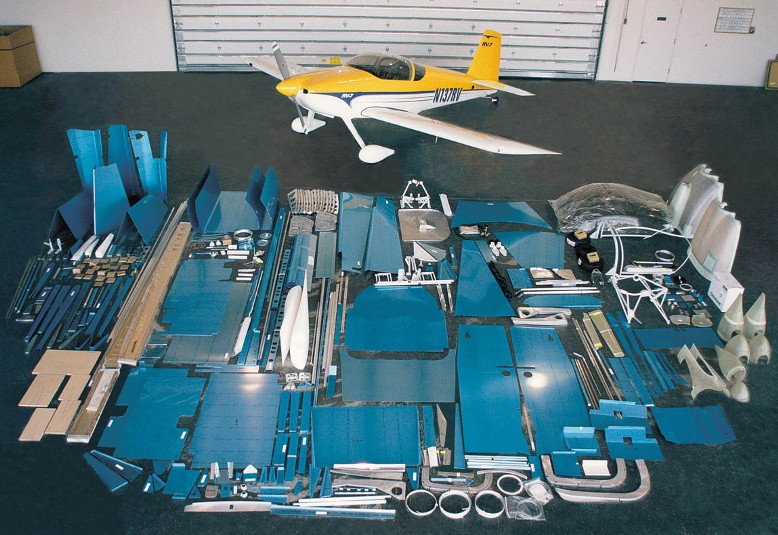Welcome to my build log for my Van’s Aircraft RV-7, two-seat sport aircraft. It’s a fantastic airplane that’s good at a number of missions:
- It’s fast (200+ mph) so it’s a great cross-country airplane.
- It’s slow (stall speed is 51-58 mph) so it’s great for getting into and out of small strips.
- It’s aerobatic (+6/-3G) so it’s great for just pure sport flying.
Pilots rave about RV handling qualities and after flying one, I totally understand. The plane responds instantly to your inputs. The demo pilot said to grip the stick low with your fingertips and just “think” about the direction you want to go.

This is one of the factory demonstrators, not my personal airplane.
Fast forward 10 years. After putting off building for a number of years for various reasons (no time, no space, wife wanted a house first :-)), I finally decided that if I didn’t get started, I could come up with reasons to put it off indefinitely. It wasn’t the ideal time to start building since we had two young kids at home (5 yrs and 8 mos when I started), but I knew there would never be an ideal time to start and I didn’t want to be retired before I could enjoy the plane. Since we had kids, the RV-10 (4 seats, non-aerobatic) seemed like the obvious choice.
I went to the factory with a couple of friends and got rides in both the RV-10 and RV-7. While the 10 is a fantastic plane, we decided that it made more sense to own a family airplane with partners and build a pure sport plane. 90%+ of my flying is solo or with one other person on board and is within 100nm of our home airport. When I started building, we already owned a share in a 1977 Cessna Cardinal II. We’ve since upgraded our family plane to a 2001 turbo-normalized, Beechcraft A36 Bonanza. It’s roomier and faster than an RV-10. An RV-7 and an A36 have turned out to be a fairly ideal pair of airplanes to own.
I started planning for the build in mid-2008, buying tools, building the practice kits, and attending the sheet metal SportAir workshop. I had to finish our kitchen remodel first though, so building didn’t actually begin until February 2009. First flight was February of 2004, almost exactly 5 years later. I took about 1 year off during the build for various reasons (work crunches, bathroom remodel, vacations, etc.), so I actively worked on the project for about 4 years.
I’m building the straight 7 which is a taildragger. Van’s also makes the RV-7A which is a tricycle gear version, but I went with the taildragger for a few reasons:
- I think it just looks nicer, especially on the ground.
- It’s lighter by about 15 lbs.
- I think Van’s nose gear design is not as robust as it should be (there have been several cases of nose gear collapsing).
I’m also going with the tip-up canopy instead of the slider. Although the slider is nicer on the ground since you can open it fully for taxi ventilation, I really like the unobstructed visibility the tip-up provides. When I started construction, I had never even flown in a taildragger, much less knew how to fly one. I trusted the countless reports of how easy these were to fly and took the plunge. I’ve never regretted that decision for a second.
Here is an overview of all of the kit components that must be assembled to complete the airframe. This represents approximately half the time necessary to complete the airplane. The remaining time is spent on systems work (engine, avionics, brakes, lighting, etc.).

